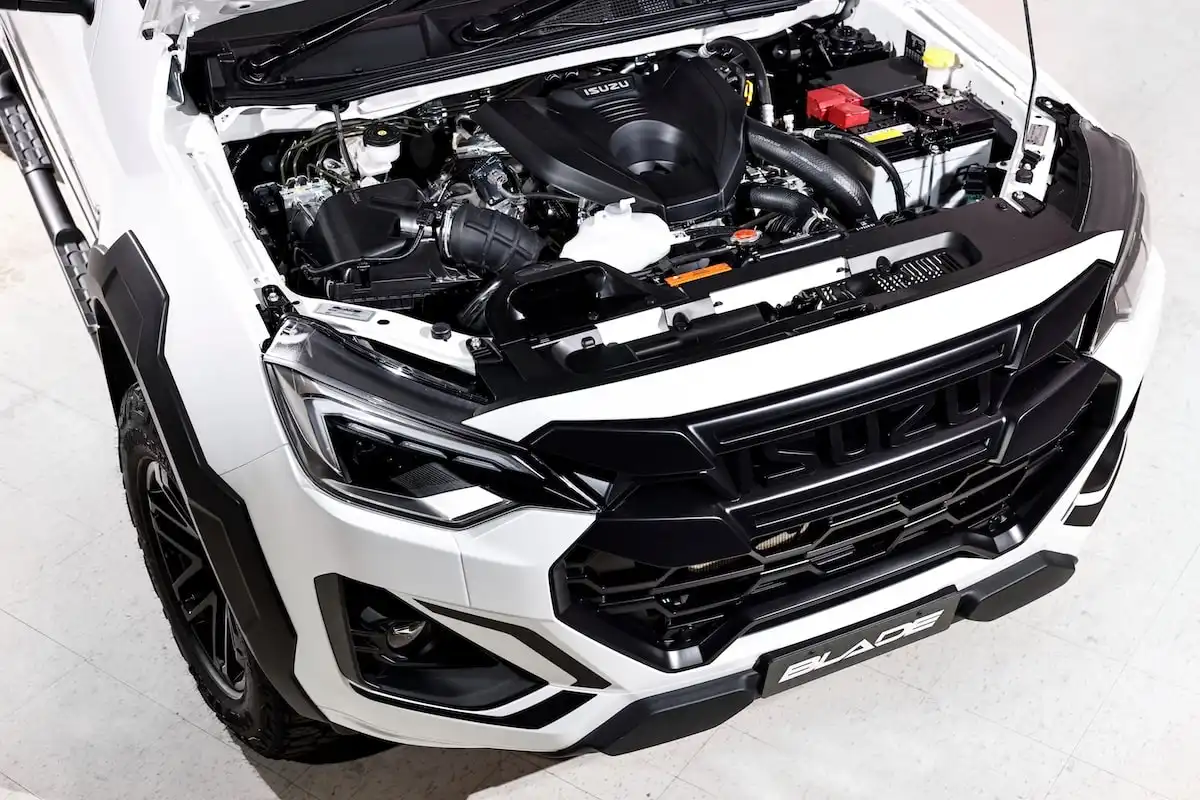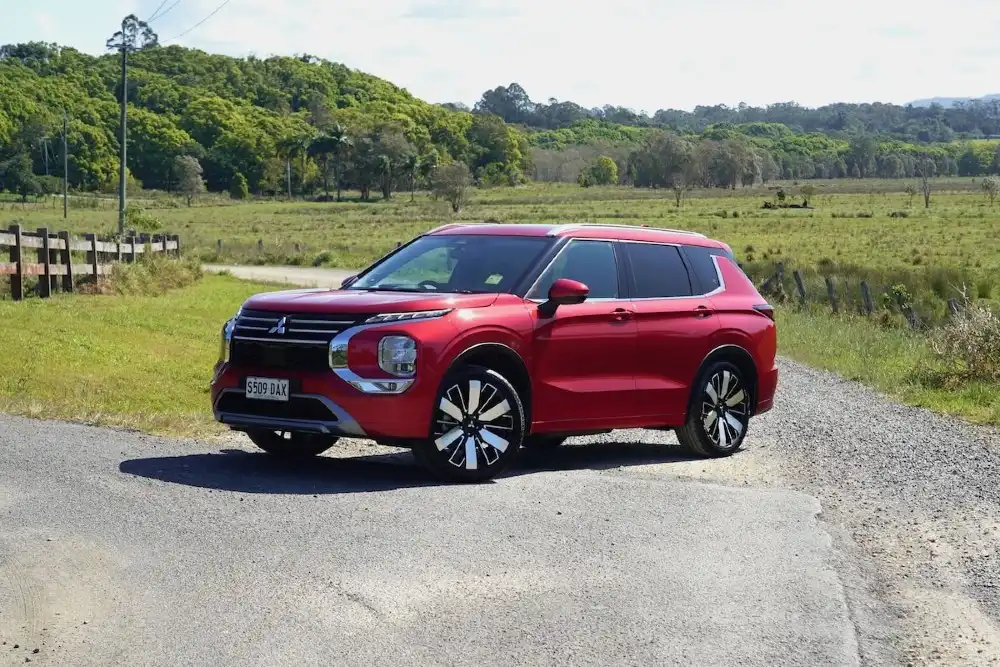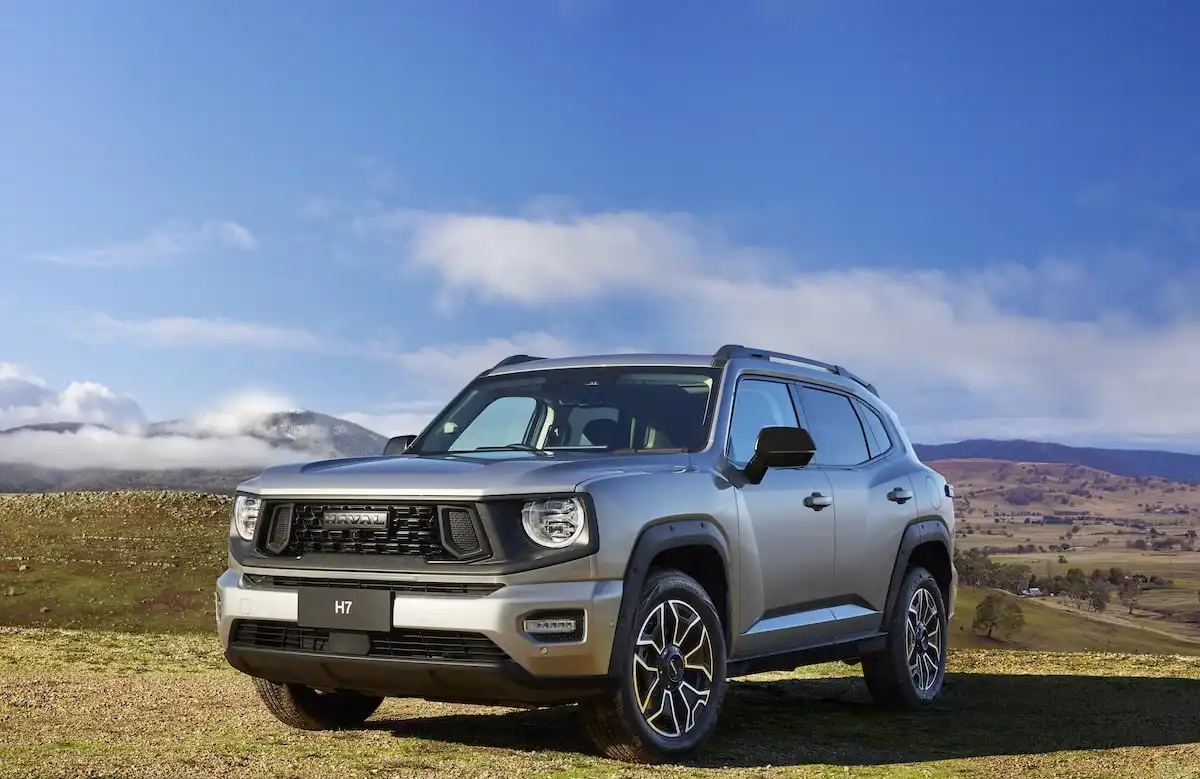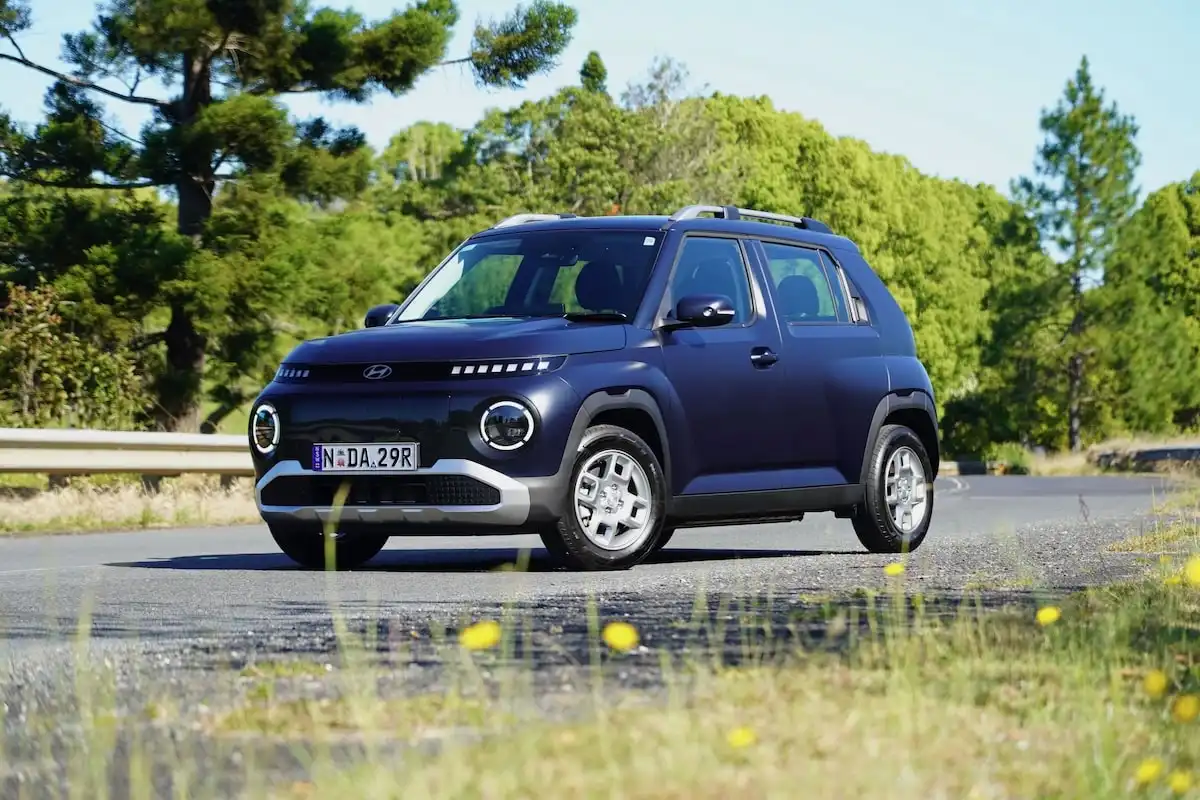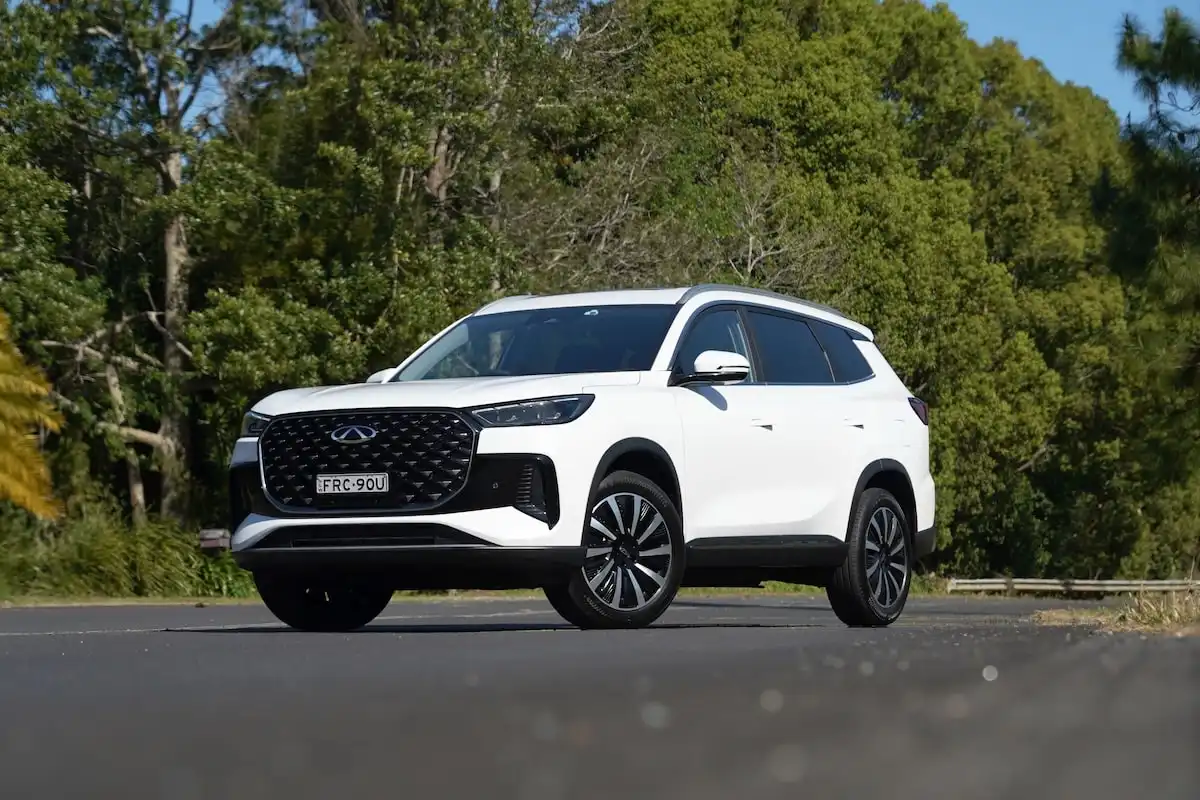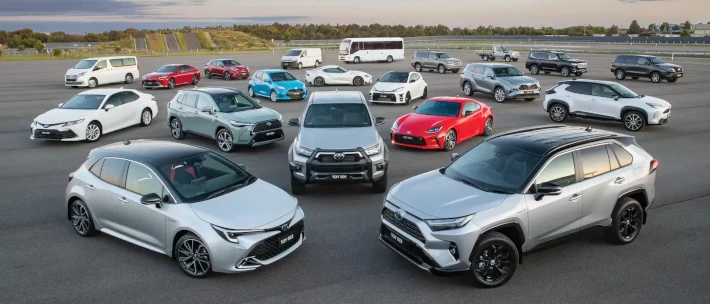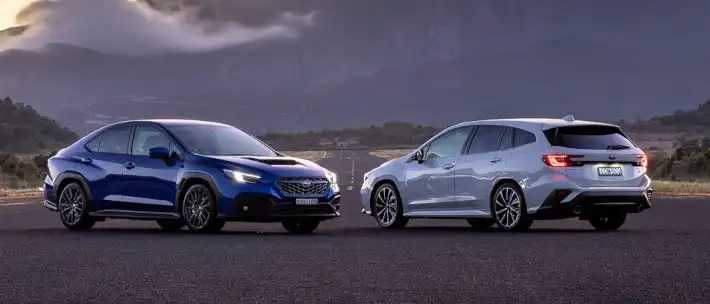Utes are arguably Australia's favourite vehicle, consistently topping sales charts, remaining the backbone of our culture and the go-to vehicle for millions of working Aussies.
While utes are famed for their robust platforms, cargo-hauling abilities and go-anywhere nature, fuel efficiency has often been an afterthought for the segment.
After all, power and efficiency are a difficult combination to juggle without either some major sacrifices, new technology breakthroughs or some seriously clever engineering.
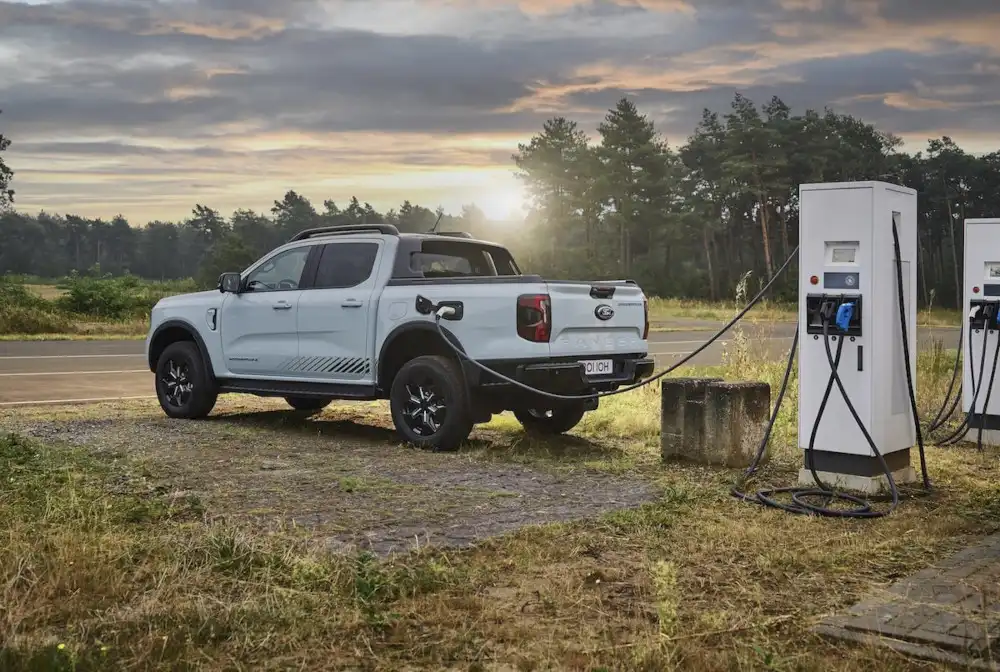
For buyers in 2025, however, there are a number of fuel-efficient options in the world of work-ready single and dual-cab utes, including some new plug-in hybrid options designed to give you the versatility and power without massive fuel bills attached.
Let's take a look at ten of the most fuel-efficient utes currently on sale here in Australia in 2025.
GWM Cannon Alpha PHEV - 1.7L/100km
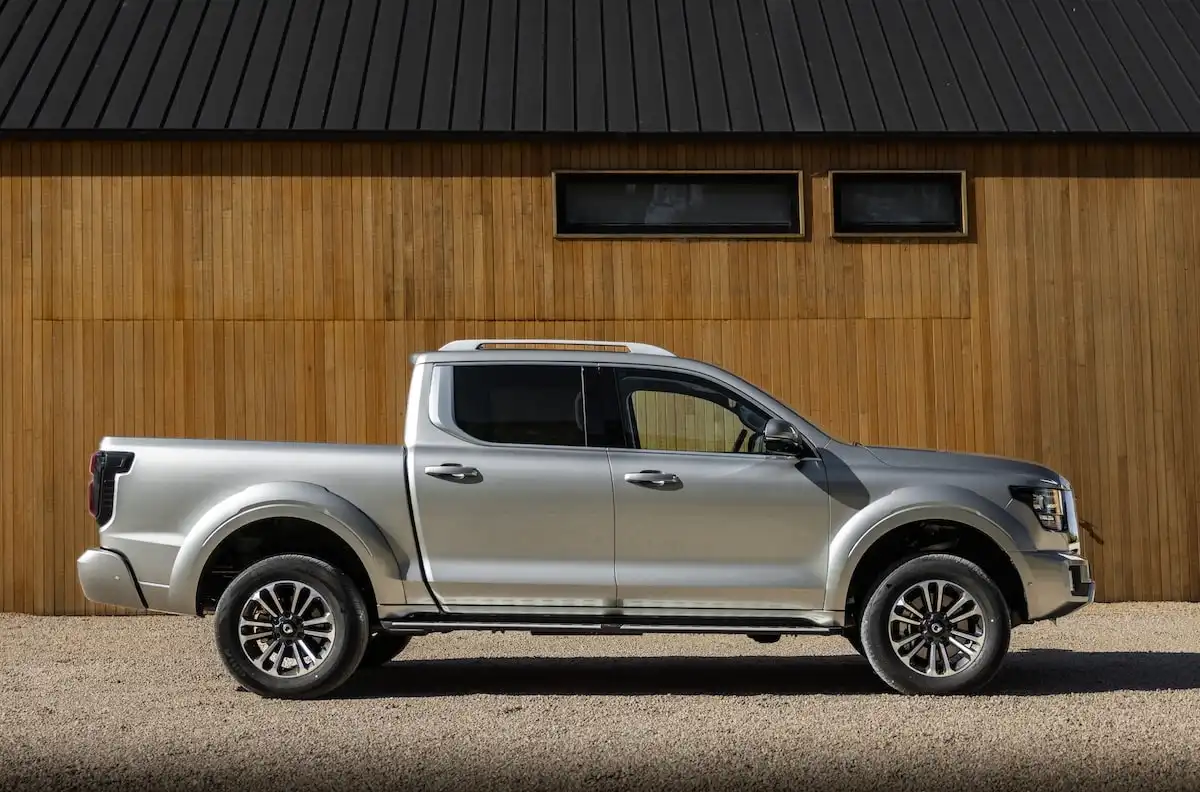
GWM’s plug-in hybrid version of the almighty Cannon currently wears the crown as Australia's most fuel-efficient ute.
The Cannon Alpha PHEV comes powered by a 2.0-litre turbocharged four-cylinder petrol unit paired with an electric motor and clever transmission, with combined outputs standing at a massive 300kW of power and 750Nm of torque.
With the help of a 37.1kWh battery pack, the Cannon Alpha PHEV offers a claimed 115km worth of driving on EV power alone and can sip a just 1.7L per 100km on the combined cycle.
BYD Shark 6 - 2.0L/100km
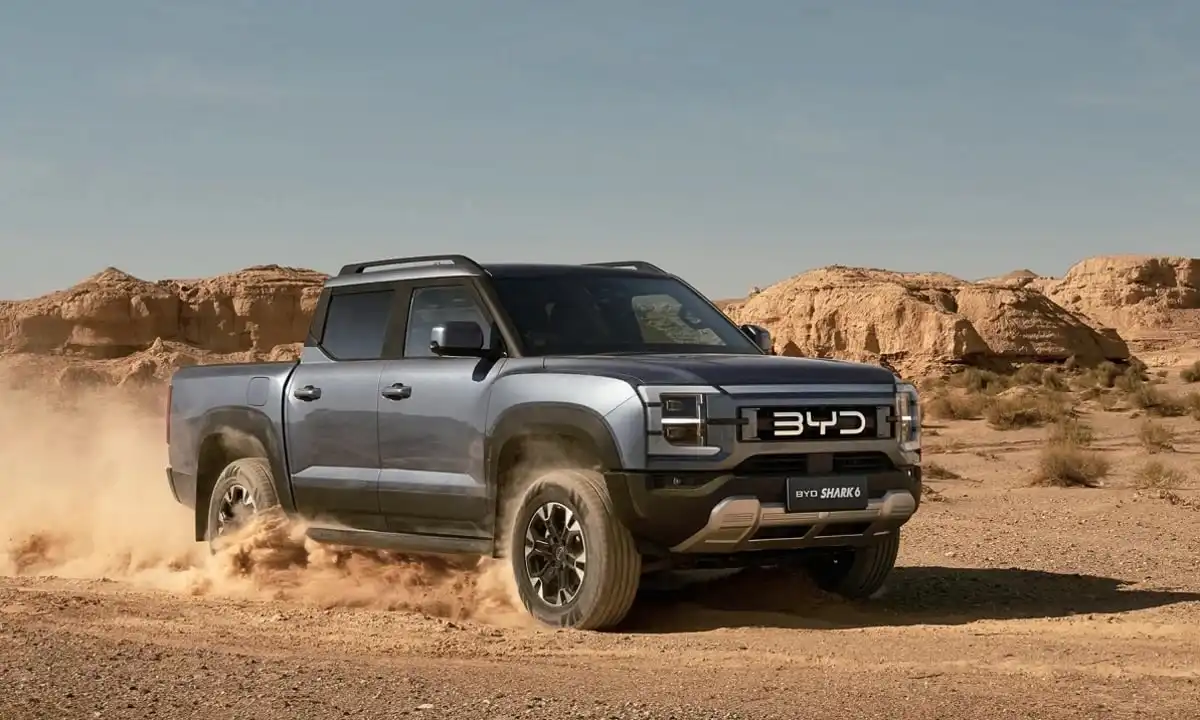
The Shark 6 has been one of the best-selling plug-in hybrid vehicles to hit the market in 2025.
Designed to give buyers the best of both worlds, the Shark 6 offers stacks of power from its twin electric motors working alongside a petrol engine, producing a combined 321kW of power and 650Nm of torque offering 790kg of payload and 2,500kg worth of braked towing capacity.
Throw in a massive 29.58kWh battery into the mix to feed those electric motors and the Shark 6 consumes a claimed 2.0L per 100km when you keep the battery topped-up, increasing to 7.9L per 100km if the battery dips below 25 per cent.
Ford Ranger PHEV - 2.9L/100km
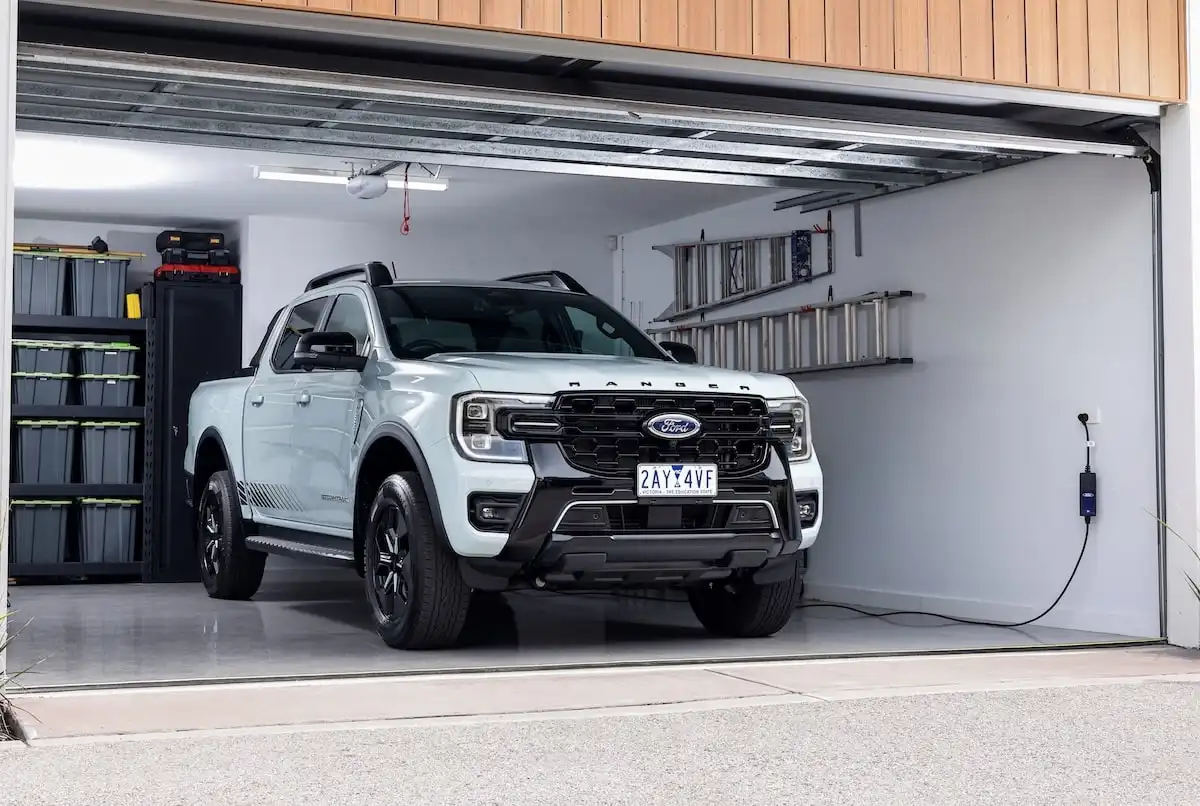
The Ford Ranger plug-in hybrid has been designed to take on the BYD Shark 6, combining all the power, versatility and work-ready toughness that the Ranger has been celebrated for with a new, fuel-efficient beating heart.
The Ranger PHEV lineup comes powered by a 2.3-litre turbocharged petrol unit paired with an electric motor and there's 207kW of power on tap, with a monstrous 697Nm worth of torque to get you up to speed or out of trouble.
The Ranger PHEV betters the Shark 6 when it comes to towing capacity, offering up to 3.5 tonnes worth of pulling power, payload figures between 795 - 830kg and claimed fuel economy figures of just 2.9L per 100km, so long as you keep the 11.8kWh battery pack charged up.
Isuzu D-Max - 6.7L/100km
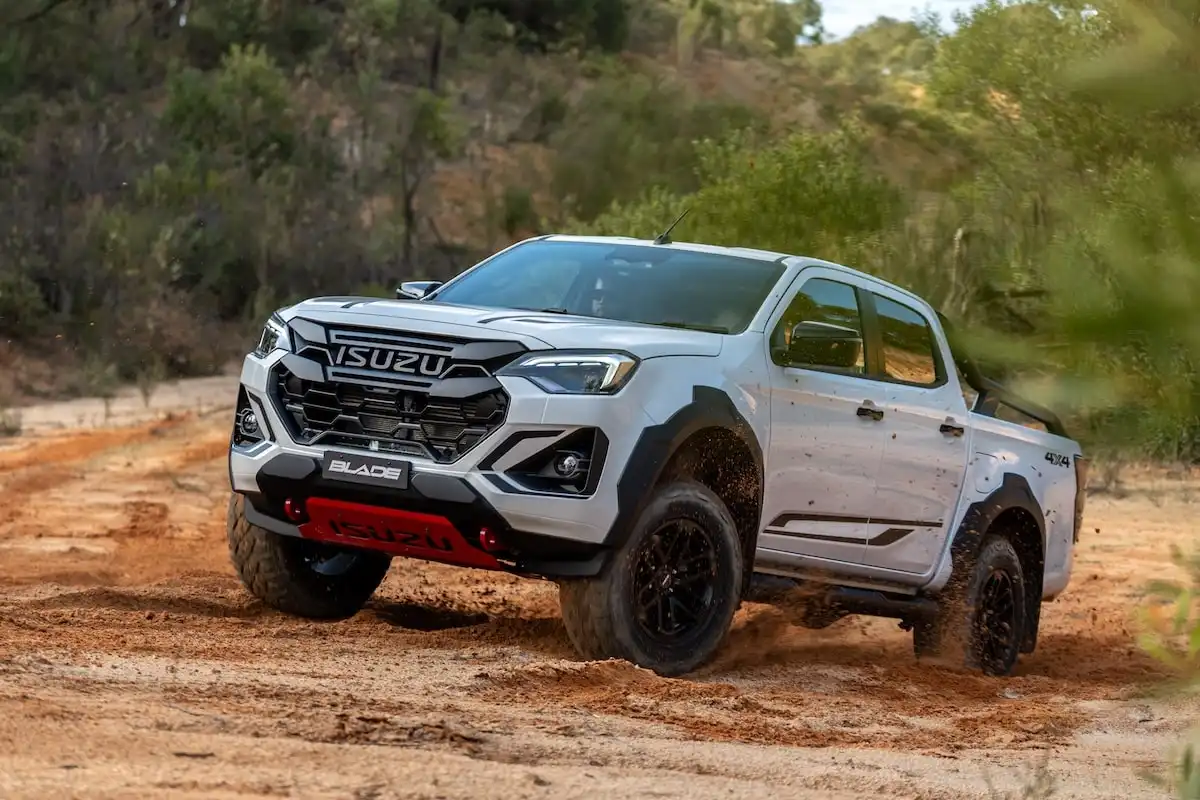
Moving to the more traditional, turbo-diesel part of the market, the Isuzu D-Max remains one of the most fuel-efficient single, crew and dual-cab ute offerings on the market.
The company offers the D-Max lineup with both its flagship 3.0-litre turbo-diesel unit and a less powerful, far more fuel-efficient 1.9-litre turbo-diesel engine that sips between 6.7 - 7.0L per 100km, depending on the variant.
While the reduced power and torque figures mean that your braked towing capacity drops, there's still a healthy 350Nm of torque on tap and some serious efficiency gains to sweeten the deal.
Mazda BT-50 - 7.0L/100km
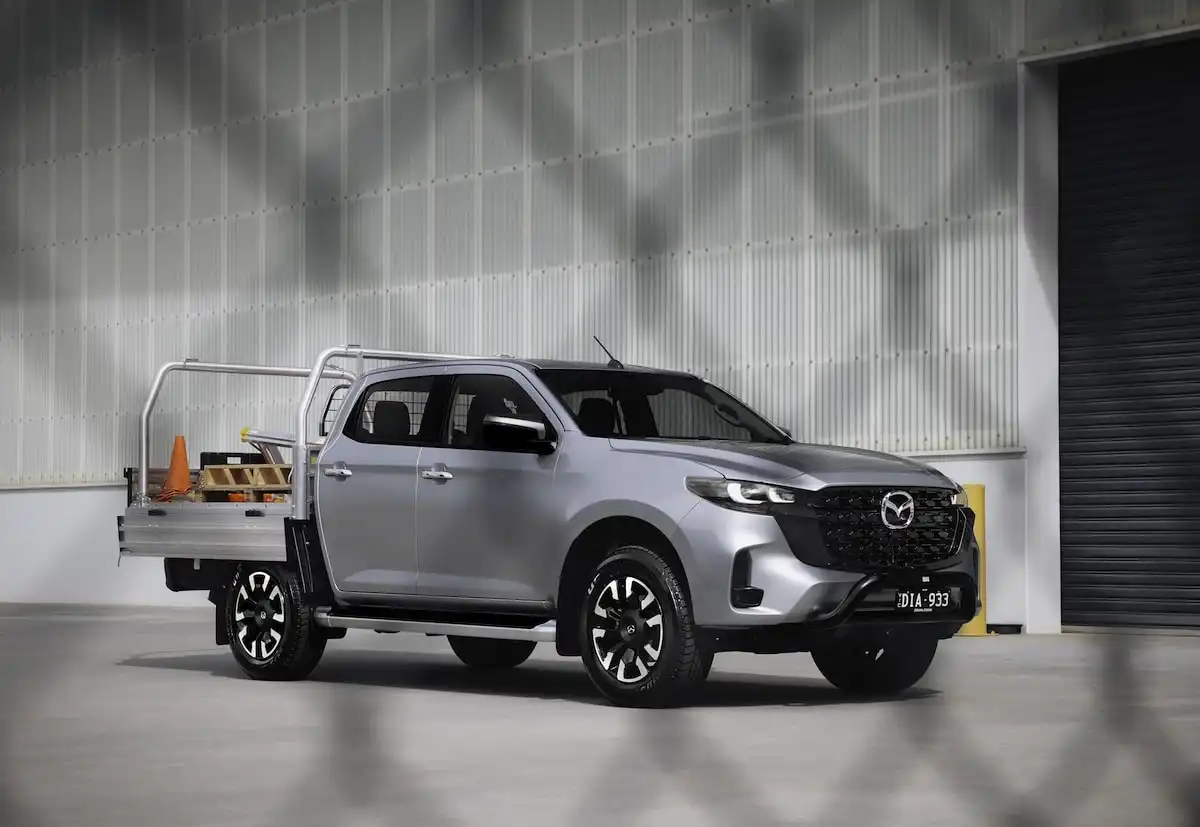
The Mazda BT-50 is actually a twin-under-the-skin to the Isuzu D-Max, which means buyers benefit from the same, tough-as-bricks platform and engine lineup.
In the context of fuel economy, that's quite a good thing, because the smaller 1.9-litre turbo-diesel unit is a peach when it comes to efficiency while still offering enough pulling power for a wide variety of jobs on the worksite.
Nissan Navara - 7.2L/100km
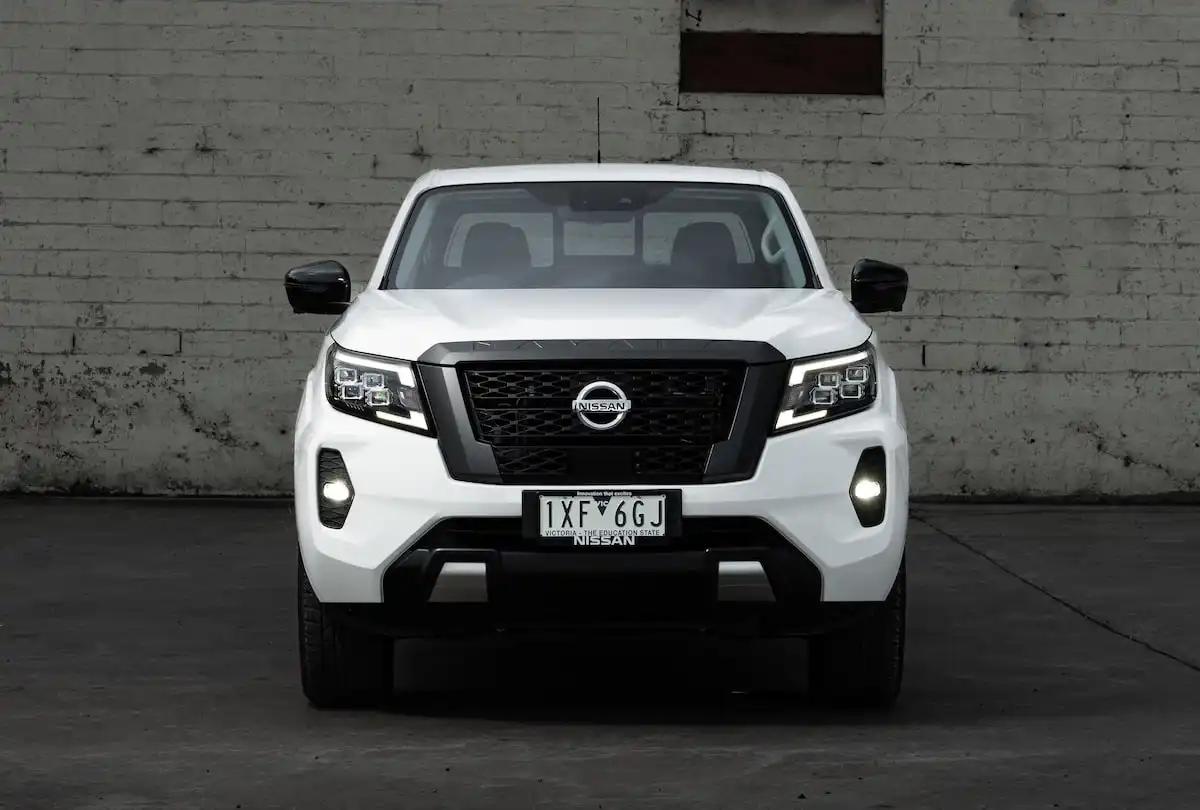
Nissan's versatile Navara lineup offers a single cab, king cab and dual-cab lineup for Australian buyers, which is powered by two engine options.
The base models receive a 2.3-litre turbo-diesel unit producing 120kW of power and 403Nm of torque, while the rest of the range receives a twin-turbo diesel four-cylinder producing 140kW of power and 450Nm of torque.
Fuel economy figures stand at 7.2L per 100km for the single turbo diesel unit, while the twin-turbo diesel is rated at 8.1L per 100km on a combined cycle.
Toyota HiLux Workmate - 7.4L/100km
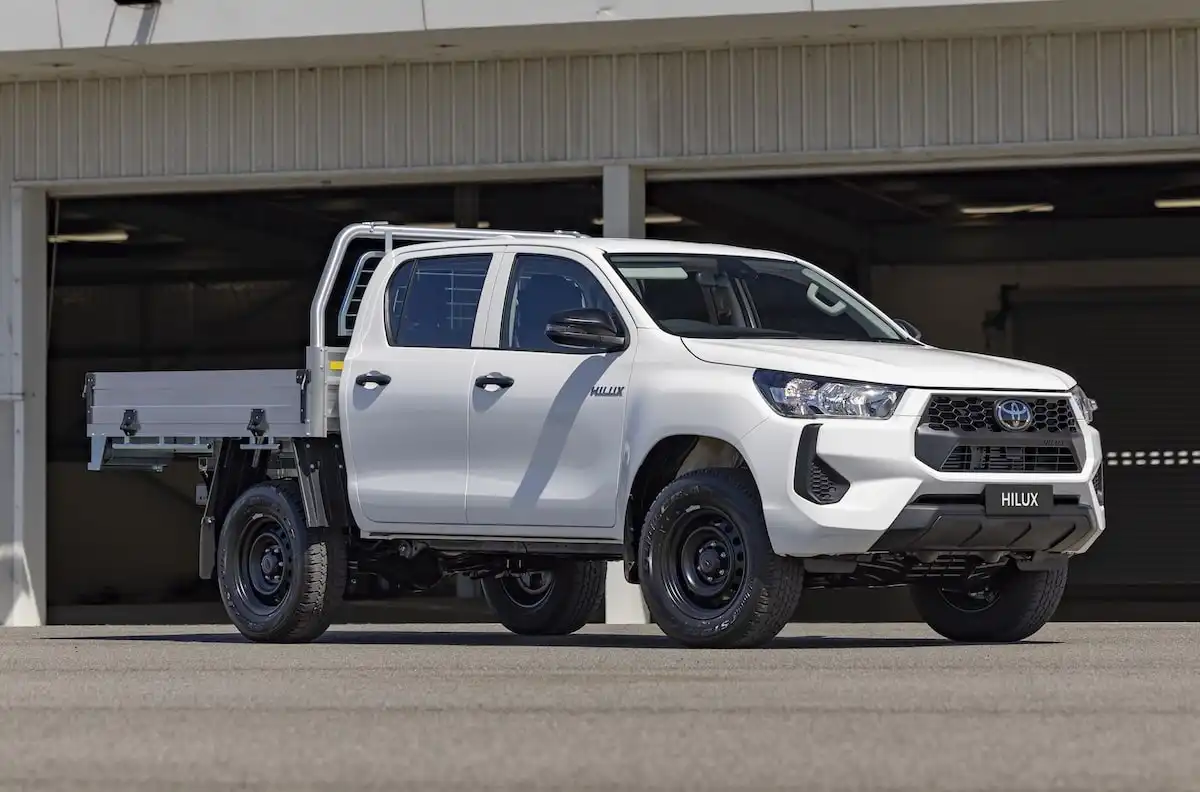
Perhaps the most famous name in the Australian ute landscape, the Toyota HiLux is available here in single-cab chassis, extra-cab and double-cab configurations with a choice of 4x2 and 4x4 platforms.
Fuel economy for the entry-level petrol HiLux Workmate diesel range stands between 7.4-8.0L per 100km, depending on your variant and option of 4x2 or 4x4 platforms.
Mitsubishi Triton GLX - 7.4L/100km
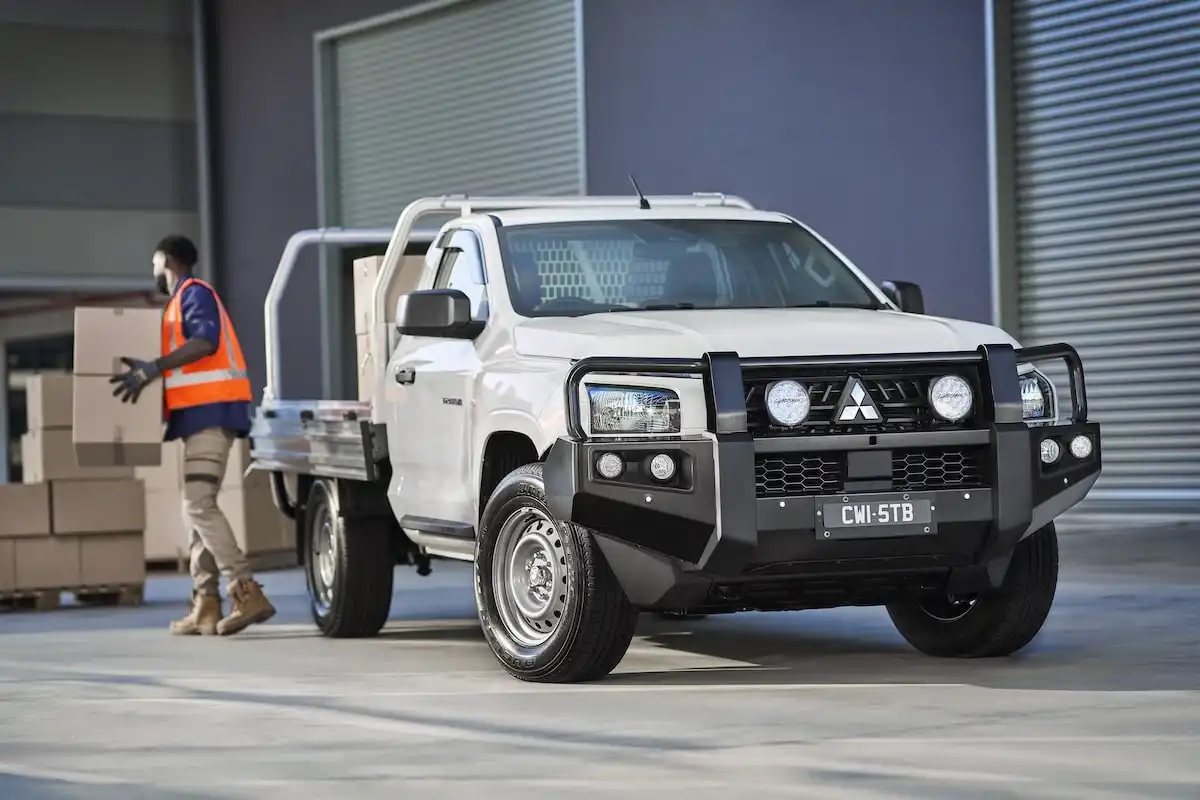
While Mitsubishi launched its latest-generation Triton lineup in dual-cab formats only, the company has since beefed up its lineup with a wide range of single and club-cab offerings.
Not only does this give buyers a more accessible entry-point into the Triton range, it also gives fuel-conscious buyers a number of tasty options.
The latest Triton has power supplied by its 2.4-litre bi-turbo four-cylinder produces 150kW of power and 470Nm of torque which, in a single-cab 4x2 configuration, sips between 7.4 - 7.6L per 100km while offering outstanding payload figures above one tonne and 3,500kg worth of braked towing capacity.
Kia Tasman - 7.4L/100km
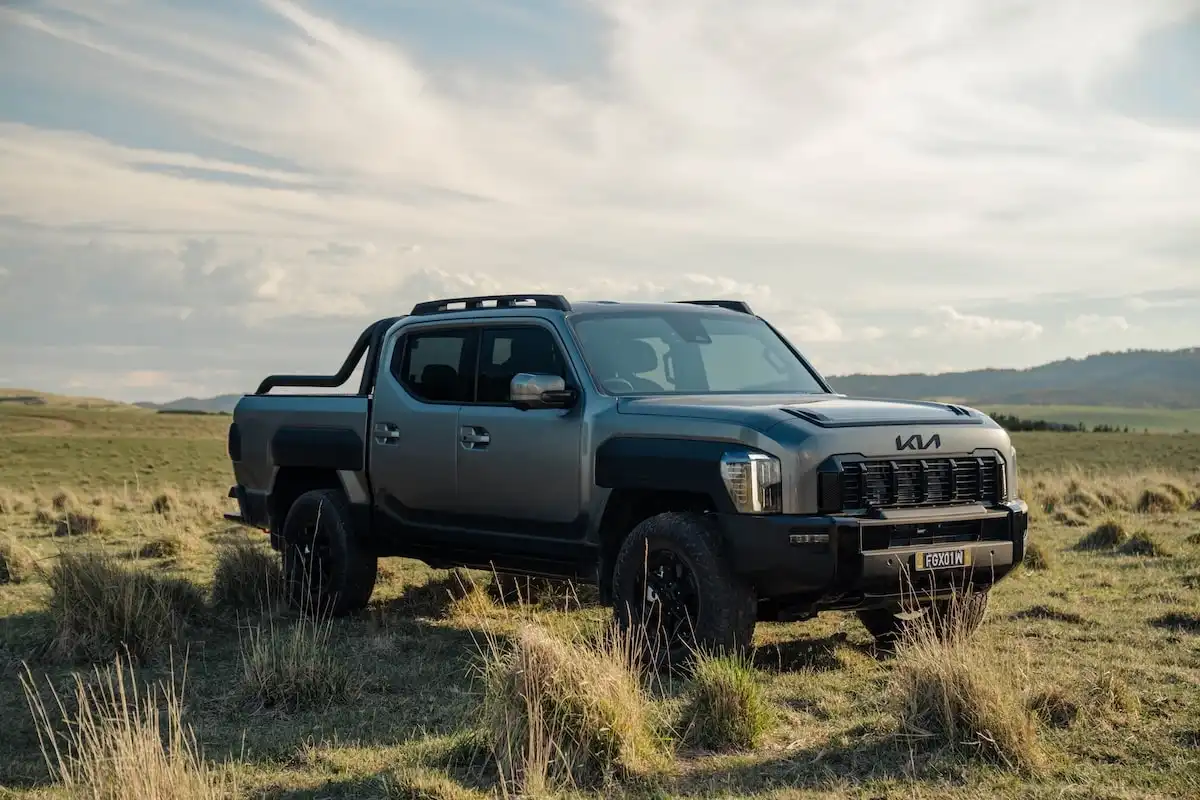
Kia's first-ever foray into the world of utes has been a hot topic within the community.
With a very bold styling package, there's certainly no mistaking the Tasman for being a carbon copy of existing dual-cab utes out on the market, though it ticks some important boxes for working Aussies looking for a fuel-efficient workhorse.
The Tasman's 2.2-litre turbo-diesel unit kicks out 154kW of power and 440Nm of torque, offering 3,500kg of braked towing capacity and fuel economy figures of 7.4L per 100km in the entry-level Tasman S 4x2.
Volkswagen Amarok TDI405 Core - 8.0L/100km

Our list wraps up with the almighty Volkswagen Amarok.
While the company doesn’t offer the Amarok in a single cab or even a 4x2 variant, VW's turbo-diesel expertise means the entry-level TDI405 Core offers a tonne of power while keeping fuel economy figures in check.
The Amarok TDI405 engine produces 125kW of power and 405Nm of torque, translating to 3,500kg of braked towing capacity and payload figures of 967, while sipping a very responsible 8.0L per 100km on the combined cycle.
Request a Quote
Our team of car-buying experts is waiting on hand to help find you the best possible price on your next car - reach out today to find out how much you stand to save.
Get in touch with one of our Car Buying Specialists today.
Request a quote